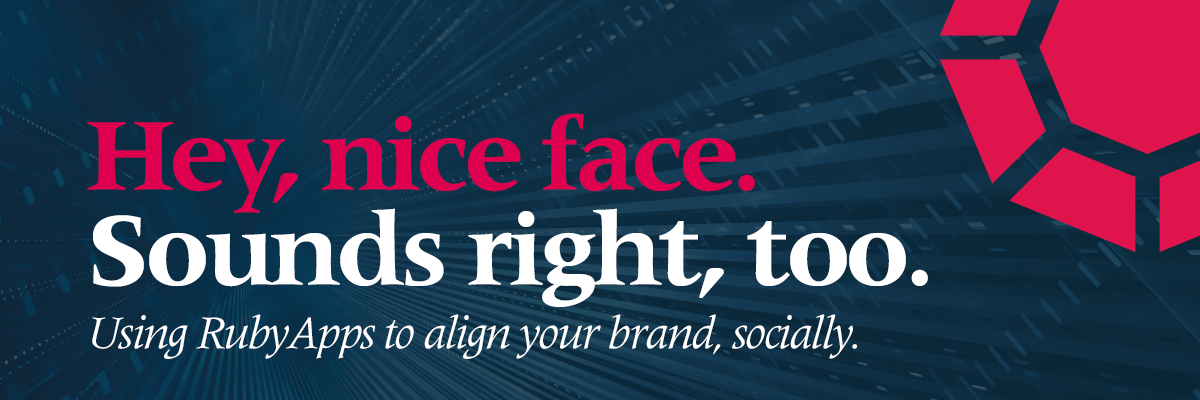If my brand were a real person, what would its voice sound like?
This critical question is one that all brand managers must ask. Is it friendly, warm, and accessible or stuffy, snooty, and aloof? Whatever the answer, once established it must be maintained and broadcast consistently over communication channels, internal and external.
To the external, one obvious and popular outlet is the social media ecosystem. Selecting the appropriate channel or channels—whether Facebook, LinkedIn or niche, targeted networks like Dogster or GothPassions—is the first step. Publishing is next, and speaking in your brand’s voice authentically, with regularity, and with purpose, is essential. As detailed in Adweek’s evergreen article on Establishing Your Brand Voice on Social Media, “Inconsistencies can sabotage your entire social strategy.”
This applies visually as well as verbally.
What do we mean by this? Have you ever spoken to someone regularly on the phone, built up a rapport and gotten familiar, but never met? Then, one day you meet and say, “Wow, I pictured someone much huskier (or something)? With your brand’s voice, matching that voice to its appropriate appearance is crucial (and obvious).
There is another layer of complexity to this, though—particularly given the requirement of controlling your brand’s voice and appearance: social media networks all manage and render images differently, which impacts how they show up to your audience across networks and devices. Just as there are character limits that define how many words you can include on each network, there are different recommendations for image cropping that dictate how your visual content will appear.
Creating content is time consuming. Creating great content is even more consuming. Creating great content and then adapting it for each network’s prescribed character constraints is even more time consuming. Now, layer in pairing your written content with something visual and...you get the point.
There are some tools to help this process, among them being Canva, which can speed up the versioning process for content creation.
Another way to support this process is by having RubyApps at the center of your marketing stack. RubyApps, the platform behind content management systems like RubyContent and RubyLaw, gives publishers the ability to optimize and scale images to prescribed sizes. It also enables users to control Open Graph, a protocol that all social networks understand, to display when sharing webpages. (Open Graph allows publishers to choose a specific image, rather than having the specific social networks crawl the shared page to determine the appropriate image to show.) RubyApps, in combination with HubSpot, a marketing automation platform, can accelerate and facilitate the social publishing process.
If you are not set up with RubyApps and HubSpot, there is still another acceptable—albeit suboptimal—approach to pairing an image with written content: standardizing the image cropping and using it across all platforms.
What dimensions are recommended?
We suggest 1,024 x 512 pixels, with the following notes:
1. If you are using infographics and/or images with photo subjects on the edges, consider adding a border
2. These dimensions are suggested only for landscape layouts
3. 512 x 256 pixels (or half the recommended size) is also acceptable
While this solution isn’t the best option, it is the most feasible for saving time while ensuring that your audience recognizes your brand—warts and all—in the way you want it to.



